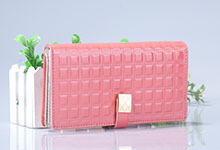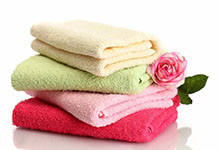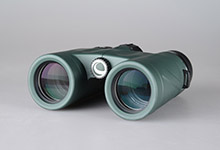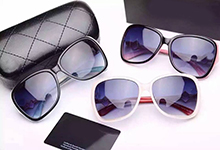House training a puppy or adult dog may seem daunting, but almost any dog can be trained to wait at the door and relieve himself outside, instead of going in the house. The point is to reate a schedule for feeding your dog and taking him outside.
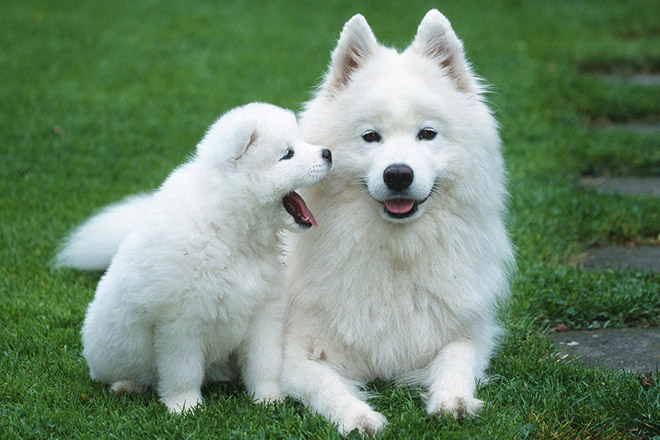
Take your dog outside frequently. This is the most important thing you can do to teach your dog to relieve himself outside. While it may seem excessive, try to take him outside as frequently as possible, about every half an hour. Stick to a schedule and try not to miss even one designated "outside time," since your dog will learn to associate these outside trips with relieving himself.
If you're training a puppy, you'll need to take him outside more frequently. Puppies have small bladders and can't physically hold their pee for long periods of time.
Put your dog on a feeding schedule. Feed your dog at the same time in the morning and at night, then wait 20 to 30 minutes before taking him outside. Having a feeding schedule will make it easier to predict when your dog will have to go to the bathroom, making house training easier.
Puppies need to be fed three times a day. If you have a puppy, schedule a regular lunchtime feeding as well. Again, a puppy should be given more opportunities to go outside, since it has a smaller bladder.
Learn to interpret signs that your dog has to go. Signs include walking around stiffly, sniffing the floor as though he's looking for a place to go, holding his tail in a funny position, and so on. If your dog shows signs that he needs to go to the bathroom, take him outside right away, even if it's before the designated time to go out. Include a verbal cue, such as saying, "outside" before you take him out. Eventually, you'll be able to ask him if he needs to go outside, simply by saying the word.
When you first start training your dog to go outside, you're teaching him that when he feels the urge, that means it's time to go outside. Each time your dog successfully goes outside, the idea that bathroom = outside is reinforced.
Remember to take your dog outside 20 to 30 minutes after every meal and after he drinks water since he'll likely have to go to the bathroom.
Pick a designated spot outside. Choose in your backyard, or if you don't have one, near a green patch of grass somewhere. Take your dog back to the same place each and every time you go outside. Dogs are creatures of habit. You can help your dog feel comfortable and less anxious by picking a good spot for him to use as his "bathroom" each time he goes out. Use a verbal cue such as, "go potty" when you've reached the spot. He'll learn to associate it with the place.
Remember to follow your city's ordinances regarding picking up after your pet. If you have no choice but to let your dog use a public spot as his bathroom, you'll need to bring a bag so you can pick up the waste and dispose of it.
Supervise your dog during house training. When you first bring your dog or puppy home, plan to spend a lot of time watching your pet to make sure he doesn't go to the bathroom indoors. This supervisory period is imperative because it enables you to teach the dog to quickly associate the urge to pee or poop with going outside. Intercepting the dog or puppy before he goes in the house is the best way to house train quickly.
If you can't stay home all day to supervise your dog, you'll need to have someone else come over to take the dog out several times during the day. Make sure the person knows to take the dog to the designated spot each time.
Keep your dog in a crate at night and when you're away. If you leave your dog or puppy free to roam the house at night, he's sure to end up soiling the floor. Keeping him in a cozy crate at night and when you're gone reduces the chance that he'll make a mess. Dogs don't like to soil their dens, so your dog will try to wait until he can go outside to relieve himself.
Dogs should see their crates as safe spaces and enjoy spending time there. Keeping your dog in a crate is not meant to be a form of punishment. Never punish your dog by banishing him to the crate, or he'll come to associate it with fear instead of comfort.
Do not let your dog stay in his crate for too long before taking him outside. If you wait too long, he'll have no choice but to relieve himself in the crate. Dogs need plenty of exercise and playtime too, so you should never leave them crated for more than a few hours at a time or overnight.
Clean up messes right away. If your dog makes a mess in the house (and he definitely will), clean it up right away and use a cleaning solution to get rid of the scent. If your dog smells an old mess in a certain spot, he'll think of that as a bathroom spot.
Do not punish the dog for making a mess. Just clean it up and stick to the schedule.
Besides these tips mentioned above, it's also important to prepare some toys for your dogs, which will be also good for training.


